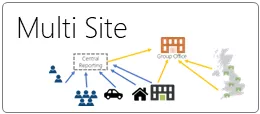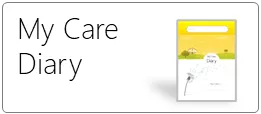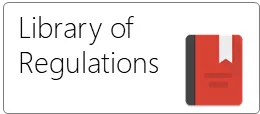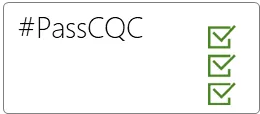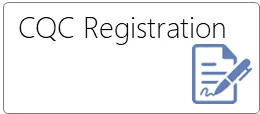Why the Professional Standards Passport Works Better Than Click-Through Training
Most practices now use some form of online training. It’s convenient, it prints certificates, and it looks tidy for CQC.
But here’s the problem: completion doesn’t equal understanding.
The tick-box trap
Online training often becomes a race to finish modules rather than a chance to learn. Staff click through the slides, take the quiz, download the certificate — and forget half of it by the next day. Managers see 100% completion and assume the team is compliant. In reality, few could explain how those policies apply in their daily work.
The Passport difference
The Professional Standards Passport turns that model upside-down.
It’s a pocket-sized handbook that brings together policies, standards, and personal development in one place. Staff keep it with them, use it in supervision, and record their reflections and progress.
It’s not just training — it’s learning in action.
- Staff take ownership of their own competence.
- Knowledge is available instantly on the job.
- Managers can see real evidence of reflection, not just a certificate.
- It supports “coffee-table” learning sessions and peer discussion.
Why it matters for CQC
The CQC’s Framework asks inspectors to find evidence that staff understand and apply the principles of safe, effective, caring, responsive, and well-led care.
The Passport provides that evidence directly — written by the people delivering the service.
The human factor
The Passport isn’t anti-technology. It’s pro-learning.
Where online systems measure attendance, the Passport measures absorption. It gives every staff member a reason to pause, think, and connect what they’ve read to what they do.
A better guarantee of real compliance
When training lives in a person’s pocket rather than on a computer, it becomes part of daily practice.
That’s the kind of lived compliance that survives inspections — and builds safer, stronger teams.
The Proof
The Winterbourne View incident showed that the Management had spent considerable resources to craft exemplary policies and system documents
However, this did not filter down to the frontline, usually becasue staff do not have the time or motivation to read and retain dozens of 20 page policies
A short focused policy is far more effective for learning, retention and application to real life
A Quick Comparison
| Subject | Digital LMS | Professional Standards Passport |
| Learning Model | Top-Down Delivery | Bottom-Up Reflection |
| Engagement | Passive | Active & Peer-Led |
| Evidence | Completion Certificates | Authored Reflections |
| Regulation 18 | Shows Training Given | Proves Competence Gained |
| Integrity | Tick-Box Risk | Personal Accountability |
| Cultural Effect | Compliance Fatigue | Reflective Practice |
Using our system as part of your defence in a CQC investigation
Case Study: False claims by disgruntled staff
Date: August 2025
Account by: Practice Manager
Location: Manchester
The CQC Complaint
Several disgruntled ex-employees got together to file “whistleblowing” complaint against the practice. The allegations included equity of access; failings in admin and governance; insufficient staff; stress at work; bullying and harassment; freedom to speak up …… and the kitchen sink !
We had no idea what evidence had been submitted to support the complaint.
- We had four days to respond.
- Failure to provide assurance would trigger a same-day unannounced visit.
How We Prepared
- Preparation extended well beyond documents.
- Reception and Admin staff focused on patient communication protocols, clinicians reviewed compliance logs, and managers checked evidence folders and were ready with an action plan.
- Clear communication ensured that everyone understood their responsibilities if inspectors arrived without notice.
How We Responded
- We acknowledged shortcomings where appropriate and presented clear action plans to address any gaps.
- We countered inaccurate claims with a robust defence supported by actual evidence.
- We showed our best in class “inspection-ready” system, incorporating a full annual compliance plan, and pointed the CQC to our suppliers web site
The Outcome
The CQC accepted our defence and were assured that we had a robust Quality Management System in place.
The case was closed and all action suspended.
What Saved the Day
The ability to compile a convincing defence in a professional manner is critical. Having dealt with inspectors over many years, the first port of call was to connect with the inspector to establish a working relationship. Familiarity with all types of systems from Ardens to TeamNet, and from Practice Index, QCS and FPM, made evidence gathering that much easier.
For Governance side, just 3 months ago we purchased a Quality Standards System that is fast becoming a National Standard. We explained this system to the CQC, and they checked out our supplier site.
With virtually no preparation, we were able to assure the Inspector that: -
- We had an ISO 9001:2015 “inspection-ready anytime” system, incorporating a full annual compliance plan
- It was a recognised Governance system to demonstrate HSCA and CQC Guidance compliance
- We had an “Interview-ready” staff handbook, including Appraisals, personal development; competency and knowledge; critical policies
- The system created a culture of self-responsibility and engagement where staff monitored their own competency; trained each other; and organised their own workshops
Key Takeaways: When dealing with a potential investigation
- Demonstrate you are Well-Led and well managed; show that this was just an anomaly
- Demonstrate that you have a robust Governance System; show how you operate in practice
- Prepare your systems early; It's too late to start when they knock on the door
Product used:
Quality Standards Manual: A structured approach to being inspection-ready anytime
Staff Passports: A personal Staff Development handbook for every member of staff, containing Appraisals, CPD record; Best Practice Knowledge; Key Policies. Creates a culture of self-responsibility and teamwork.

When it comes to compliance, many practices feel under pressure to keep updating their policy documents year after year. But the reality is very different: regulations hardly change.
The Truth About Policy "Updates"
Most so-called "updates" are minor tweaks—small changes to wording, layout, or grammar. Rarely do they involve substantive legal changes.
We analysed 10 years of legislation (2012–2023) and found:
- Out of 398 new laws, just 17 affected providers.
- That averages only 1 or 2 meaningful changes per year.
- In 2023, there were no relevant new laws at all.
Key Legislative Changes Since 2012
Here are the substantive changes that actually matter for providers:
| Legislation | Year | Relevance |
|---|---|---|
| Health and Care Act | 2022 | All Providers |
| Approved Premises (Substance Testing) Act | 2022 | Substance Abuse |
| Down Syndrome Act | 2022 | All Providers |
| Botulinum Toxin and Cosmetic Fillers (Children) Act | 2021 | All Providers |
| Coronavirus Act | 2020 | All Providers |
| Mental Capacity (Amendment) Act | 2019 | All Providers |
| Organ Donation (Deemed Consent) Act | 2019 | Hospitals |
| Health & Social Care (National Data Guardian) Act | 2018 | All Providers |
| Mental Health Units (Use of Force) Act | 2018 | Hospitals |
| Assaults on Emergency Workers Act | 2018 | Ambulance |
| Children and Social Work Act | 2017 | Adult Social Care |
| Immigration Act | 2016 | All Providers |
| NHS (Charitable Trusts Etc) Act | 2016 | Hospitals |
| Health Service Commissioner for England (Complaint Handling) Act | 2015 | All Providers |
| Health and Social Care (Safety and Quality) Act | 2015 | All Providers |
| Care Act | 2014 | All Providers |
| Immigration Act | 2014 | All Providers |
| Mental Health (Approval Functions) Act | 2012 | All Providers |
That's it. Fewer than 20 laws in a decade have made a real difference to provider compliance obligations.
What Suppliers Won't Tell You About Costs
The compliance market is big business. Providers are often sold more than they need. Here's what's typically on offer:
What's Available
- Downloadable packages – around £300 or less, promising 500+ policies, procedures, letters, and templates.
- Online systems – £1,000–£2,000 per year, offering over 1,000 pages of guidance, with features like staff activity logs.
The Hidden Costs
- Time to read every policy: Between one and three months of solid work (most never attempt it).
- Staff training/testing via online systems: Adds administrative load and ongoing management time.
- Briefing and testing staff knowledge: For a small organisation, this can equate to £15,000 in annual costs.
Saving Time and Money
Here's the bottom line:
- Suppliers have little incentive to tell you the truth. If they admitted you only need 50 core policies, and that legislation changes maybe once a year, their model collapses.
- You do not need a policy for every occasion. A well-written standard policy, applied with common sense, usually covers most scenarios.
- Use policy packages selectively. If you're buying a large library, treat it as a reference resource—not a manual that must all be implemented.
Key Takeaway
Regulations are relatively stable, and the real compliance burden is often overstated. Instead of drowning in hundreds of documents, invest in a concise set of core policies, keep an eye on genuine legal changes, and focus on training staff to apply good judgement.
In other words: compliance is about people, not paperwork.
Would you like me to combine this with the previous blog (on number of policies) into a longer guide-style article, or keep them as two separate, more focused posts?
This depends on the size of your organisation and the purpose of your policies.
This is what you should aim to have for a typical organisation with less that 50 staff:-
| CQC Policies | 20 to 30 |
| HR | 5 to 10 |
| Health & Safety | 5 to 10 |
| Admin | 5 to 10 |
For larger organisations, the numbers might go up by say 20% due to the complexities of dealing with stricter and more centralised systems.
Minimise the number of policies
- Focus on key policies and get them right
- A common sense approach to safety will cover most unusual situations
- It is better to invest time in developing staff and instilling common sense
- Do not overwhelm staff with paperwork to cover every eventuality.
CQC says they're not that interested
Is it about policies?
"Absolutely not. We are much less interested in policies and protocols than in knowing what care is like for your patients, whether staff know what to do about things like child protection, and so on. Good practices shouldn't need to do anything they aren't already doing."
Professor David Haslam, National Clinical Adviser to the Care Quality Commission
(Interview in Healthcare Leader News May 2012)
"We won't normally spend a great deal of time reading policy or procedure documents, unless we need to look at them to substantiate other evidence or what staff or patients have told us about their experiences."
James Hedges, media officer at the CQC (statement to MDDUS May 2013)
This is where the CQC focus their inspections:-
- Experiences people have when they receive care and the impact the care has on their health and well-being.
- Talking to patients, their families and their carers.
- Looking at records or speaking with staff and how they reach their judgements.
British Medical Association says don't bother with large numbers
Question: Is 'CQC' all about policies and protocols?
What the BMA says:
"We believe that most providers will already be compliant with the essential standards" and "CQC registration should not involve the development of large numbers of new policies and protocols."
Extracts from the BMA CQC Registration guidance for GPs.
|
How do you overturn a poor rating? When Providers get a poor rating, most will work hard to fix the issues, as no one wants the negatve publicity |
|
|
Summary of CQC Response
|
|
|
PLAIN ENGLISH SUMMARY OF THE CQC RESPONSE CONTEXT CQC RESPONSE CQC POLICY ON REINSPECTION CQC RISK BASED TARGETTING • CQC is focused mainly on finding new services at risk THE EFFECT ON PROVIDERS In effect, these Providers are trapped in a system where a negative rating becomes a permanent stain, almost impossible to remove. FUTURE PLANS Changes to the framework are underway, the CQC states “Work is therefore currently underway to improve how we use our new regulatory approach” |
|
| Link to the Freedom of Information Request | |
Differentiate data between old KLOEs Vs New Single Assessment Framework
The “Publication date” was originally designed to represent a single type of event, being a site-inspection. This is now redundant as the Single Assessment Framework now adds several types of inspections and assessments ranging from a minor review to a full site inspection.
The Data Sheets are no longer fit for purpose as the “publication date” now creates a misleading impression as to the real status of inspection
This request is broken down into parts to enable you to provide clear and concise responses to each specific area.
FREEDOM OF INSPECTION REQUEST
Please provide updated data sheets which identify the following:-
Differentiation of inspections carried out under different systems:-
1. Inspections under the old KLOEs system
2. Inspections carried out under the new Single Assessment Framework
CQC Response
Refused because: CQC estimates to search our records for the requested information would take significantly longer than 18 hours and we are therefore refusing to comply with any part of it.
Editors comments
This is a trivial exercise of exporting data from the main database, which the CQC do and publish every month
A SQL programmer could probably do this in 30 minutes
We believe the real reason is that it would be embarrasing for the CQC to admit that the ratings data has become corrupted as it mixes up two completely different Frameworks
In addition, it would also expose that on-site inspections have fallen to such an extent as to make them meaningless
Link: https://www.whatdotheyknow.com/request/single_assessment_framework_tran#incoming-2870030
CQC Inspections Inspections dates have become corrupted
The “Publication date” was originally designed to represent a single type of event, being a site-inspection. This is now redundant as the Single Assessment Framework now adds several types of inspections and assessments ranging from a minor review to a full site inspection.
The Data Sheets are no longer fit for purpose as the “publication date” now creates a misleading impression as to the real status of inspection
This request is broken down into parts to enable you to provide clear and concise responses to each specific area.
FREEDOM OF INSPECTION REQUEST
For inspections carried out under the Single Assessment Framework, please provide updated data sheets that include information on each Quality Statement reviewed as follows:-
1. Date the Quality Statement was reviewed
2. Score achieved for that Quality Statement
3. Evidence quality: Whether via Site Inspection OR Remote/Other Review
CQC Response
Refused because: CQC estimates to search our records for the requested information would take significantly longer than 18 hours and we are therefore refusing to comply with any part of it.
Editors comments
This is a trivial exercise of exporting data from the main database, which the CQC do and publish every month
A SQL programmer could probably do this in 30 minutes
We believe the real reason is that it would be embarrasing for the CQC to admit that the ratings data has become corrupted as it mixes up two completely different Frameworks
In addition, it would also expose that on-site inspections have fallen to such an extent as to make them meaningless
Link: https://www.whatdotheyknow.com/request/single_assessment_framework_tran_2#incoming-2870031
Misleading ratings on CQC site
During this transition to the new Single Assessment Framework (SAF), the public facing web site will show a range of “hybrid inspections” ranging from an old KLOE based inspections to partial application of the SAF to a full SAF based inspection. For the data to be meaningful and transparent, it is important that the Public have a clear and easily digestible picture of the level of checks and the exact dates these were carried out.
EXAMPLE TO ILLUSTRATE THE ISSUE:
In total, the SAF has 34 Quality Statements with 6 Evidence Categories each, giving a grand total of 204 potential measuring points for a full assessment or inspection.
From a recent live example on the CQC web site:
When a single Key Question “equity of access” is reviewed via a telephone interview, the remaining 203 evidence category are scored and updated to the latest SAF formulas based purely on the previous rating.
The date of the latest assessment is displayed at the top on the main page and on each Domain page to inform the Public about the age and reliability of this report and assessment.
THE ISSUE
The information displayed omits the critical facts that:-
1. only ONE Evidence Category out of 204 was checked
2. that the latest assessment represents 0.5% of the potential items that could be checked
3. that 99.5% of the updated items are from a real site-inspection
4. that the evidence for the 99.5% updated items is in actuality 5 years out of date.
FREEDOM OF INFORMATION REQUEST
Please provide details of what steps the CQC has taken to address this anomaly so that the public is assured of transparent and easily understood information regarding:-
1. the number of Evidence Categories that were reviewed
2. the date/age of each review
3. differentiating evidence obtained at actual site-inspections
CQC Response
In accordance with section 1(1) of FOIA we are able to confirm that CQC does hold recorded information in relation to this matter.
CQC does not display scoring information down to the evidence category level on our website.
We are currently working on finalising the automation of our publication and will then be delivering design improvements to our reports on the website. This improvement work is currently scheduled to start at the end of October.
Editor's comments
CQC did not address the issue and did not suply the information awaiting improvements in October 2024
Following this request, the CQC scrapped the Evidence Ratings altogether
Link: https://www.whatdotheyknow.com/request/single_assessment_framework_prov#outgoing-1734540
CQC
Formal CQC process for managing requests for a re-inspection
We have recently received the following response from a member of your team with reference to improving ratings following an inspection:-
“…… providers generally cannot request a re-inspection. If a provider did ask us to re-inspect their service, we would likely consider their request and any specific factors around this, but there is no formal process for this as we generally focus our resources on services where there is risk.”
As at June 2024, there appear to be some 9,158 providers with some level of poor rating, with 7,876 dating back to between 2019 and 2023 and 642 dated 2018 or older, who are effectively barred from improving their rating even for relatively minor infractions where documentary evidence of improvement could be sufficient, without requiring a site visit.
It is of concern that there is no formal process to manage a provider request for reinspection.
Furthermore there is a contradiction in policy where resources are allocated to “where there is risk” but inexplicably excludes thousands of providers already identified as high risk.
FOI REQUEST: MANAGING REQUESTS FOR RE-INSPECTION:-
1. If the process exists, please provide details together with reasons why this is not published on the CQC web site
2. If the process does not exist, please provide details of when and how this will be rectified
CQC Response
There is no formal process for providers to request an assessment to change their rating, nor are there plans to introduce such a process.
Editor's Comment
Regardless of the improvements made, there is no pathway to remove the stigma of a negative rating, which must be displayed prominently on web sites, and can remain unchanged for up to 10 years.
At the date of this request, there are almost 8,000 Providers stuck with negative ratings which are up to 5 years out of date.
In effect, these Providers are trapped in a system where a negative rating becomes a permanent stain, almost impossible to remove.
Link: https://www.whatdotheyknow.com/request/formal_cqc_process_for_managing#outgoing-1734527
How these providers failed at everything all at once
We looked at two particular inspection failures, one had as many resources as you could wish for and another being your usual smaller provider with one Manager.
Both had comprehensive policies; an online document management system; and generally provided good care.
Things ran smoothly. Everything looked fine.
At The inspection
It all looked good on paper, so the CQC Rating came as a shocker.
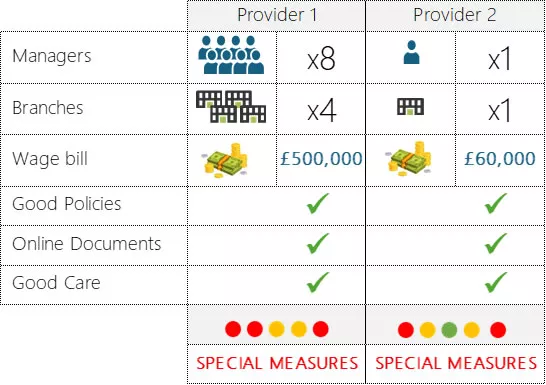
Senior Management is shocked!
Information isn’t to hand, processes are not always followed, there are gaps in the system, things are not done properly.
2024 Inspections will be even more challenging as the focus shifts to “Feedback” which most systems are not designed for
This rating will stay on their web site until the next inspection. That could be the next 5 Years, unless you ask for a reinspection.
Lessons learnt
- It is not just about having the best policies or more human resources
- 99% of the inspection is about continuous compliance
- Don’t let the inspector be the first to find your weaknesses
The solution
CQC inspections are based on your performance over the last 12-24 months. By the time an inspection is announced, it is already too late to prepare.
The registered Manager is central to an inspection. The uncomfortable truth is that the Registered Manager delegated everything, did not monitor, and took their eye off the ball.
You must be inspection-ready anytime, and your system should tell you this at the press of a button.
Apps for a robust Clinical Audits System.
A Clinical Audit System should comprise two elements:-
- An effective Policy and Governance
- A consistent process that records each audit
Our system will enable you to achieve these with two applications in tandem:-
- Risk Assessment Channel
A comprehensive Risk Assessment based on the guide by NICE; CHI,RCN, University of Leicester.
This is a living document that combines Risk Assessment, Governance, and Policy Statement in one. The initial “one-off” review should take no more than 10 minutes to complete, and the Dashboard will automatically generate a Risk Matrix together with a risk rated Governance and Policy Document, incorporating National Best Practice as published by NICE.
Regular reviews should take no more than 5 minutes at most, best be done as a team exercise as part of the individual clinical audits. This automatically achieves group training and development; enables discussion of improvement strategies; and acts as a team refresher and briefing, to demonstrate leadership and Well-Led criterion.
- Processes Channel: Clinical Audits Record
The process for conducting regular Clinical Audits is to be found in the “Quality Audits” section in the Processes Channel.
This App covers the required principles of Topic Selection; Criteria; Standards; Outcomes; and Reflection, ensuring your approach meets the stringent NICE standards. A printable checklist allows offline planning, training and general discussion of the principles before the formal meeting.
Recording the process and outcomes takes just minutes, and the Dashboard will automatically generate your log of audits with a detailed record of your risk rated decision making.
Benefits:-
The ready-made processes take no more than a few minutes to record, and ensure that we follow a stringent quality process mapped directly to the highest standards.
What you will achieve is:-
- A record of adherence to National Standards
- Consistent and structured approach to every Clinical Audit
- Dashboards to show Risk Analytics
IPC Risk Assessed in ONE Day
98% NHS England audit score
1. The Challenge:
I joined as the interim PM of this Practice and one of my first urgent tasks was to complete the IPC audit for an imminent NHS England IPC Audit.
This was a bigger challenge than I had anticipated as there was nothing to work from, the last IPC Risk Assessment was done some 4 years ago and could not be located. There were limited regular checks, and as with many smaller Practices, there were limited staff and resources.
The Lead Nurse was faced with the daunting prospect of the 45-page NHS IPC Audit, which would have taken 3 to 6 weeks to implement on her own, with no other resource that would allow her to meet the robust requirements in such a short space of time and the inspection was due in 2 weeks.
The challenge was two-fold: Doing an IPC Risk Assessment to National Standards in a short time frame, identifying and fixing any potential issues before the auditors arrived. The only viable option seemed to be contracting an independent commercial audit.
2. NHSE Audits:
NHSE inspectors take a constructive approach in getting practices compliant.
However, a low score will likely trigger a CQC inspection as the IPC team is duty-bound to notify the CQC.
3. Solution:
By happenstance, we found that X-Genics, our Compliance System provider, was testing a prototype IPC Audit tool based directly on the NHS Toolkit and international best practice and were looking for volunteers to field test it before launch. This system was part of the digital automation bid project, we had collaborated on and had already implemented this bespoke automation software solution for general CQC Compliance and IIF Reporting.
4. How we did it
The process turned out to be both simpler and faster than we had expected.
How the system works:-
- The National Standards are broken down into bite sized mini-Apps.
- Each App has an integrated mini checklist(s) to easily manage individual IPC areas.
- Each checklist is delegated to different staff, spreading the workload across the practice.
- Results are collated, risk evaluated and summarised into the App.
- Automatic Dashboards generate an Action Planner and Risk Matrix
- Action Points are addressed, and the Apps updated.
- Checklists are reused daily/weekly/monthly to achieve continuous compliance.
- The process of evaluation and summarising into the App is repeated through the year.
We distributed the user-friendly checklists to our staff, outlining specific tasks for hazard review. Each staff member received a checklist, and they were tasked with assessing and reporting on identified hazards, and staff were encouraged to fix minor issues on the spot. The nursing team and practice manager took charge of conducting reviews in key and high-risk areas. We added an element of fun by offering chocolates as rewards for timely completion and team achievements.
After completing the assessments, the checklists were collected the following day, and entered into the mini-apps. The software generated a user-friendly visual plan, with our risk mitigation steps, and our action plan for any outstanding action points.
Our strategy focused on starting with low-risk items that were more easily manageable and within our immediate control. Having achieved these "easy wins" and gaining experience, we progressed to focusing resources on higher risk areas. Identifying at an early stage, areas that required external assistance. For instance, we identified that the original door handles in a converted residential property were not easily wipeable, necessitating replacement and scheduled this in as an action point.
5. Completion:
This approach created an efficient workflow and allowed us to tackle potential risks in a systematic manner, prioritising actions to achieve maximum impact with minimum effort.
There was zero training needed. The entire IPC Risk Assessment was completed in one day, leaving sufficient time to address issues for remedial action.
6. Outcome:
98% score achieved at the NHS England audit two weeks after our risk assessment.
We achieved well over 100% return on investment compared to external contractors, on this App alone, and have started using others such as Fire Risk Assessment. We have taken full control of IPC, and this has now become continuous compliance instead of an annual exercise.
Going forward, the checklists are now used as our regular reviews, and results used to update the Apps. In addition, we rotate the staff and checklists, so staff learn about a different area every month, in effect a continuous training regime by “learning on the job”.
All staff feel empowered, engaged and enthused with their new responsibilities, a total culture change for the Practice, and a reduced workload for the Manager and Lead Nurse. In effect, our IPC runs automatically and autonomously thanks to our motivated staff.
7. Improvements:
- We are IPC inspection ready at all times
- Professional compliance reports at the press of a button
- Saved the cost of external contractors
- Continuous Risk Assessments carried out every month at no extra cost
- A positive IPC Culture
- Reduced management workload
- Formal training sessions largely replaced by training on the job
- Staff teach each other when uncertain
8. Credits:
Author: Shabana Dehlavi Provider type: GP Practice Date of study: February 2024
The system supplier is X-Genics via their CQC focused web site everythingCQC.com.
The Audit and Risk Assessment Channel includes risk assessments for Infection Control and Fire Risk; with COSHH, Display and Screen Equipment and Safeguarding currently in the pipeline.
Case Study:
Investment and Impact Fund – NHS England
Turning a Simple Spreadsheet into a £20,000 Income in One Week
Introduction
IIF, or Investment and Impact Fund, is a funding mechanism in the UK that provides financial incentives to general practices for improving their performance in various areas, such as immunizations, cancer screening, and chronic disease management. However, tracking and reporting on the progress and achievements of these targets can be a tedious and time-consuming task for practices, especially when working collaboratively in a Primary Care Network (PCN). This case study outlines how a group of practices in a PCN used a simple spreadsheet and a mini-app platform to develop an innovative solution that not only made tracking and reporting more efficient but also helped them identify missed opportunities and easy wins, resulting in a £20,000 income in one week.
The Problem
The practices in the PCN were struggling to keep up with the IIF targets due to various reasons, including the complexity of the funding mechanism, lack of clarity on what to do next after identifying gaps, and the burden of communicating and reporting the progress to PCN managers. This is the first year practices have had a high amount of incentivised indicators to achieve, with the potential for missed opportunities and underperformance. To address these challenges, the practices decided to develop a simple yet effective solution that would not only make tracking and reporting more efficient but also help them engage and motivate each other.
The Design
The practices used a mini-app platform called eManager by X-Genics to create a custom solution that would allow them to enter data quickly and generate automated dashboards that provided instant insights into missed opportunities and easy wins. The solution was designed to focus on forward planning rather than looking back, with a month-by-month record of achievements and missed targets. The solution was financially focused, highlighting the value of missed targets and identifying easy-to-reach targets. It automatically highlighted priorities and made it easy to understand and plan. Importantly, the solution was designed to engage practices by making every practice enter data and self-examine, resulting in better targeting of patients, focused meetings on group-wide achievements, and better collaboration across the network.
Achievements
The solution had a significant impact on the practices and the PCN, resulting in a £20,000 income in one week. The financially focused dashboard enabled the practices to differentiate profitable indicators from easy kills, resulting in better decision-making and a more targeted approach to achieving the IIF targets. The practices reported better engagement and collaboration, with all four practices working together in this and other areas, resulting in a joint Patient Participation Group (PPG) for better use of common resources. The solution enabled the practices to track progression over 12 months, plan and achieve goals without any last-minute rush, and identify coding errors. The practices reported that they achieved £20,000 across the PCN in the first two weeks of using the solution, and they understood how to work with IIF for the first time as a team.
Using a fully managed system and automated Dashboards, has allowed the team to focus on performance, never having to worry about updates to the requirements or the latest version of spreadsheets. The impact on the team is evident in a single comment by Dr Peter Brown the Clinical Director of Northwest Merton PCN said “I don’t know how other PCN’s are managing without this”.
Practice Managers reported feeling a sense of achievement and feeling valued as they were able to make more effective contributions to financial performance and clinical quality measures.
“So far the system has made a real impact on visualising targets and added value as well as holding practices accountable for their end of delivery.” Said Pinar Johnson, PCN Manager of Northwest Merton PCN
Conclusion
The IIF case study demonstrates how a simple app platform that generates intelligent Dashboards can be used to develop innovative solutions to address complex teamwork challenges in the healthcare system. The practices in the PCN were able to turn a tedious and time-consuming task into a financially profitable one, using a focused dashboard that not only made tracking and reporting more efficient but also helped them identify missed opportunities and easy wins, resulting in a £20,000 income in one week. The solution enabled the practices to engage and motivate each other, resulting in better collaboration and decision-making. The success of the solution can be attributed to the practices' focus on planning forward, financially focused design, and engagement of every practice in the network.
The system can be used solely by the PCN Manager to input already consolidated data, but involving and engaging member practices has the added benefits of self-responsibility; effective delegation; grass root improvements; and individual learning, not to mention that it makes the PCN Managers life that much easier.
Single Assessment Framework: Quality Statements and Key Lines Vs Enquiry (KLOEs)
Is there a transition period from KLOEs to Single Assessment Framework
Background:
In 2022 the CQC announced providers will start to be regulated against the new single assessment framework from January 2023, and that the Quality Statements in this framework replace the previous Key Lines of Enquiry (KLOEs).
On 21 December 2022, the CQC announced a revised plan stating that the new assessment framework will begin towards the end of 2023.
The issue:
Evidence for an inspection or assessment by nature constitutes past performance, meaning that at the time of the inspection in say January 2024, the provider would need to demonstrate they were in compliance with the new Quality Standards for a pre-defined period prior to that date.
The whole of 2023 now becomes a transition gap between KLOEs phased out and a new framework coming into play, and providers need clarification as to which system to follow; when to stop the old Vs the new; and what they will be judged on at the beginning of the new regime.
The request: Please clarify:
1. The status of the KLOEs between now and the end of 2023, specifically their applicability and actual usage by inspection teams in this period.
2. The status of the Quality Statements between now and the end of 2023, specifically whether providers should prepare compliance based on these from this point forward OR only from the end of 2023 OR use both these and KLOEs in parallel.
It is important that your response is definitive as providers will rely on this and expend considerable resources over the next 12 months to be prepared for the new assessment framework.
Yours faithfully,
Editor everythingCQC
CQC Response
We have committed to being clear when the framework will directly affect health and care providers (see link below) and will give clear notice of the date from which assessments using the Single Assessment Framework will be made. Until that notice is given, we will continue our current methods to monitor, assess and rate providers. We will continue to provide updates as to the scope and status of our current inspection programme.
Editor's comments
In summary: CQC made no transitional arrangement. Providers have to use the old system until the day the SAF comes into force
Therefore, on day one CQC Inspectors will start inspecting on the new Framework, but every provider will have been using the old Framework
As a result of this this enquiry, the CQC postponed the entire Single Assessment Framework to November 2023
Link: https://www.whatdotheyknow.com/request/single_assessment_framework_qual#outgoing-1417089
| Project for a unique automation solution for Practice Management | |
| Project initiated by: | South West London Digital First (SWL CCG) |
| Commissioned by: | Group of SW London PCNs |
| Project led by: | Northwest Merton Primary Care Network |
| Initial Pilots enrolled in programme: |
|
| Status: | Initial pilots have been completed and commercial roll out commences November 2022 |
| Funding: | Qualifies for PCN Development Budget |
| Objectives | ||||||||||||||||||||||||||||||||||||||||||||||||||||||||||||||||||||||||||||||||||||||||||||||||||||||||||||||||||||||||||||||||||||||||||||||||||||||||||||||||||||||||||||||||||||||||||||||||||||||||||||||||||||||||||||||||||||||||||||||||||||||
This will also make it possible to achieve and be certified to a recognised level such as the International ISO 9001:2015 standard with less effort, and act as a benchmark of assurance to minimise the burden for CQC Inspectors. This project will address the following: -
Peer Support Network A common standard and common practices are essential building blocks for collaboration and efficiencies at scale. Digitisation will provide risk measured performance data, which can be used to pinpoint weaknesses to effect improvement. Based on a centralised and real-time record of activity, we intend to introduce new ways of support and collaboration at PCN level. This will include: -
PCN Level Management:
Quality Assurance & CQC Inspections:
Engagement with ICSs and Local Authorities: The proposed system has the capability of “Channels” for other Stakeholders, which can be workflow Apps or simple data collection instruments, Examples of usage are:-
Business Continuity Risk:
|
||||||||||||||||||||||||||||||||||||||||||||||||||||||||||||||||||||||||||||||||||||||||||||||||||||||||||||||||||||||||||||||||||||||||||||||||||||||||||||||||||||||||||||||||||||||||||||||||||||||||||||||||||||||||||||||||||||||||||||||||||||||
The key benefits of this system are: -
Benefit for PCNs PCNs will achieve instant economies of scale with zero effort. Their library of common Best Practices is maintained centrally with automatic updates. Setup takes minutes, and the system is simple and intuitive, taking a couple of minutes to learn.
Automation will free up Practice Managers, the most valuable member of the team, for more productive tasks. Standardisation of Best Practice and streamlining of processes will provide consistency of service quality. Patients can be assured that their Provider is adhering to a high-quality standard on a continuous basis and not just at a single point in time of the CQC Inspection. |
||||||||||||||||||||||||||||||||||||||||||||||||||||||||||||||||||||||||||||||||||||||||||||||||||||||||||||||||||||||||||||||||||||||||||||||||||||||||||||||||||||||||||||||||||||||||||||||||||||||||||||||||||||||||||||||||||||||||||||||||||||||
|
(100 words max scored)
|
||||||||||||||||||||||||||||||||||||||||||||||||||||||||||||||||||||||||||||||||||||||||||||||||||||||||||||||||||||||||||||||||||||||||||||||||||||||||||||||||||||||||||||||||||||||||||||||||||||||||||||||||||||||||||||||||||||||||||||||||||||||
| The first batch of Trial Versions will be sent out from early November. Initial Expressions of Interest indicate high demand. Priority will be given to PCNs and subject to slots available on the waiting list. |
||||||||||||||||||||||||||||||||||||||||||||||||||||||||||||||||||||||||||||||||||||||||||||||||||||||||||||||||||||||||||||||||||||||||||||||||||||||||||||||||||||||||||||||||||||||||||||||||||||||||||||||||||||||||||||||||||||||||||||||||||||||


